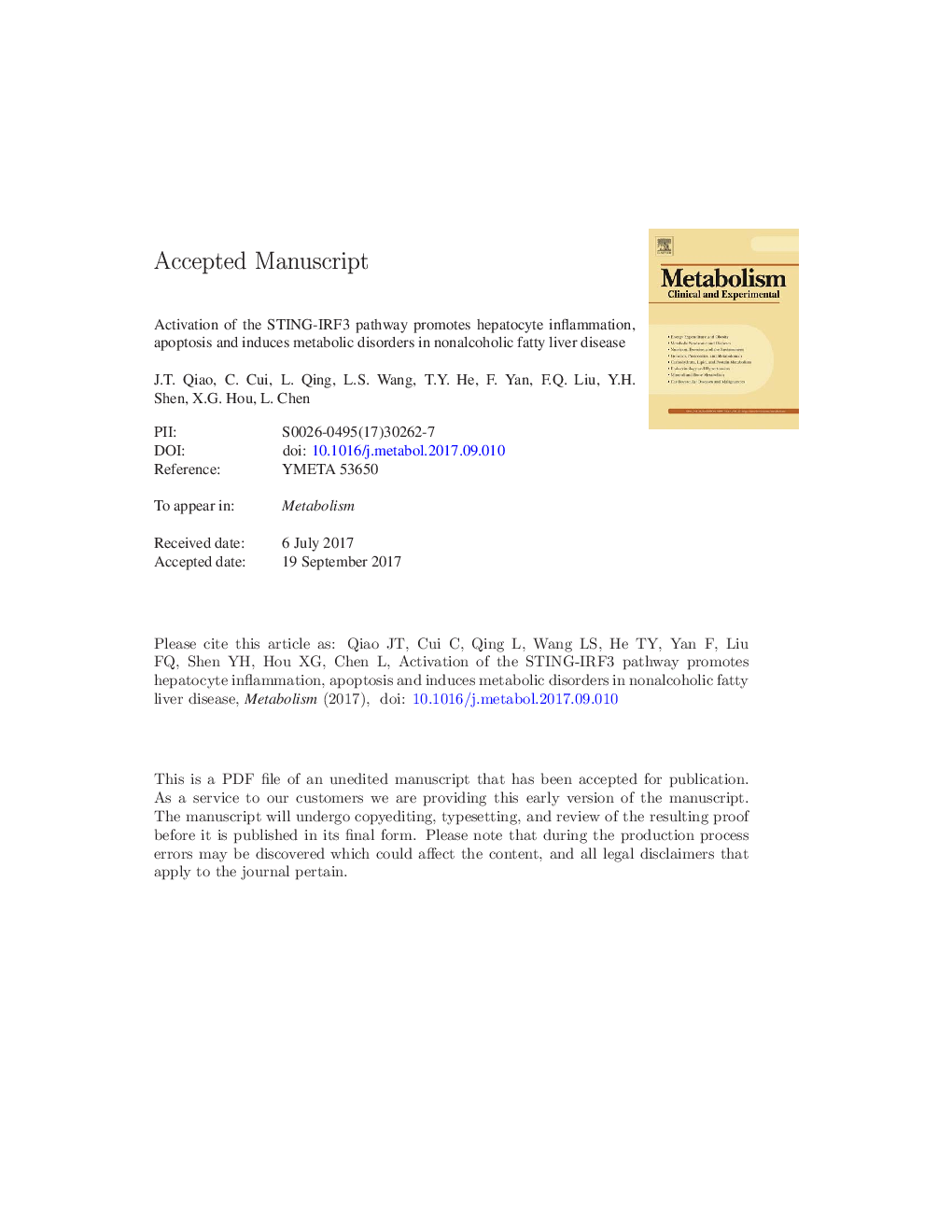| Article ID | Journal | Published Year | Pages | File Type |
|---|---|---|---|---|
| 8633061 | Metabolism | 2018 | 27 Pages |
Abstract
Our results suggest that the STING-IRF3 pathway promotes hepatocyte injury and dysfunction by inducing inflammation and apoptosis and by disturbing glucose and lipid metabolism. This pathway may be a novel therapeutic target for preventing NAFLD development and progression.
Keywords
HFDPFKIPITTIRF3NCDTRAF6PEPCKp-GSK3βGCKNAFLDPPARαLDL-CALTFFASREBP-1cG-6-PaseDMEMNF-κBFBSPBSAUCIPGTTDulbecco's modified Eagle's mediumSmall interfering RNAsiRNAintraperitoneal insulin tolerance testintraperitoneal glucose tolerance testASTAspartate aminotransferaseAlanine aminotransferaseFree fatty acidinflammationimmunohistochemicalIHCinterferonIFNinterleukinNonalcoholic fatty liver diseasetriglyceridetumor necrosis factor alphaApoptosishigh-fat dietnormal chow dietfetal bovine serumInterferon regulatory factor 3TNF receptor-associated factor 6TNF-αnuclear factor κBPhosphate buffered salinephospho-glycogen synthase kinase-3βphosphoenolpyruvate carboxykinasePhosphofructokinaseGlucose and lipid metabolismstimulator of interferon genesarea under the curveSTINGbody weightSterol regulatory element binding protein-1cpyruvate carboxylasepyruvate kinasetotal cholesterolLow-density lipoprotein-cholesterolnegative controlglucose-6-phosphataseGlucokinaseperoxisome proliferator-activated receptor α
Related Topics
Life Sciences
Biochemistry, Genetics and Molecular Biology
Endocrinology
Authors
J.T. Qiao, C. Cui, L. Qing, L.S. Wang, T.Y. He, F. Yan, F.Q. Liu, Y.H. Shen, X.G. Hou, L. Chen,
